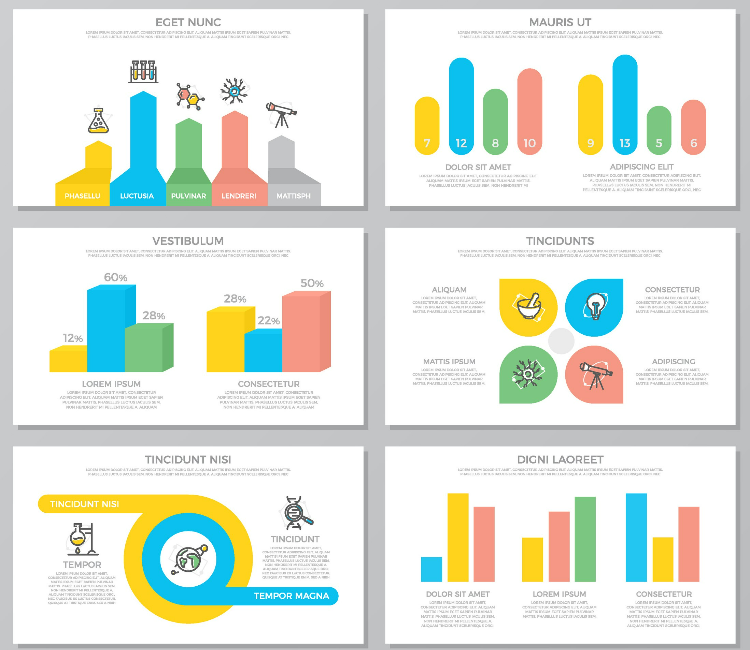Visuals That Speak: Crafting Stories with Data and Imagery
October 02, 2024 Isabell May
Simple, relatable visuals can transform complex scientific data into memorable stories, making science more accessible and impactful for diverse audiences.
Read about current trends in science communication and science communication-related activities around the University of Maryland, Baltimore (UMB) in SciComm Spotlight, the monthly column of the School of Graduate Studies Science Communication (SciComm) certificate program. To see previous SciComm Spotlight columns, visit the program’s website.
When I think about the role of generative artificial intelligence (GenAI) in our culture, I don’t really make a connection with how much water is needed to grow rice. After all, what does a GenAI chatbot like ChatGPT or Copilot — both of which I use frequently — have to do with grains? Well, according to a recent article in the Washington Post about the hidden environmental costs of using AI chatbots, the connection is real.
It turns out that the training of LLaMA-3, Meta’s open-source AI model, used the same amount of water that it takes to produce around 4,439 pounds of rice. This amount of rice roughly equals what 164 Americans consume in a year.
That caught my attention.
What also caught my attention was the way that the article communicated this information. The actual text was fairly short and written in the typical style I expect from the Post: written for college-educated audiences (at least, that was the reading score of the text according to the two readability measures in Microsoft Word). But the infographics — well, they transformed the content from something I might or might not remember after a while to information that really got stuck in my brain. I couldn’t stop thinking about what I learned in these infographics and talked about it at length with my community of parents during our morning walks — we meet up every morning around 7:30 a.m. to walk our kids to the local elementary school.
The article included three major infographics to illustrate the environmental footprint of AI chatbots. All of them used easily recognizable images such as a water bottle or a light bulb to represent the amount of water or electricity used to run a GenAI chatbot. The bottom part of the infographics then included a simplified representation of a geographic region, like Washington, D.C., or Rhode Island. These maps illustrated how the resources used by AI chatbots compared to resources used in those areas.
My major takeaway is this: combining effective visuals with relatable comparisons and context seems to be a winning combination in developing accessible messaging around data.
As someone who teaches students about effective and strategic science communication in the program I direct, I started thinking about what science communicators can learn from this Post article.
There is a lot of research on the effectiveness of visual representation when communicating complex information to intended audiences. If you have ever worked with data, you know how useful tables, graphs, figures, pie charts, etc., can be in highlighting important aspects of your work.
In the field of science communication, we spend a lot of time thinking about our audiences and ways to reach our audiences most effectively. Disciplinary conventions drive the ways that data is presented, as does the genre or mode of how we publish or share our information. For example, data visualizations for audiences within a discipline, like researchers of drug delivery mechanisms communicating with colleagues in pharmacy and medicine, will likely be different than those for broader public audiences, like visitors to an exhibit about pharmaceutical research in the Maryland Science Center.
There seem to be two major lessons here to impart to science communication practitioners:
- Simplicity in visual images is your best friend. Less can be more, but to simplify complex data to where it is still meaningful, it needs to be part of a larger story we are telling, which leads me to lesson 2.
- Connect the visual image with a larger story about the data. It is easy to get lost in the details of our data, but we need to develop the habit of stepping back regularly and asking ourselves what really matters in what we’re doing and what the overall story is that we are telling.
As an avid consumer of science communication content, both for academic and non-academic audiences, the things that resonate most with me, like this Post article, is when content creators place their main data into larger, relatable context.
To learn more about visual imagery in science communication, read a blog entry on visual science communication by Sarah Wettstadt, PhD, that I often share with students in the SciComm program at the University of Maryland School of Graduate Studies, published on the Alan Alda Center for Communicating Science’s blog “The Link.”
About the Author
Isabell Cserno May, PhD, is an associate professor at the University of Maryland School of Graduate Studies, where she directs and teaches in the Science Communication certificate program. May also directs the UMB Writing Center and is passionate about equity-based and social justice-oriented pedagogies.